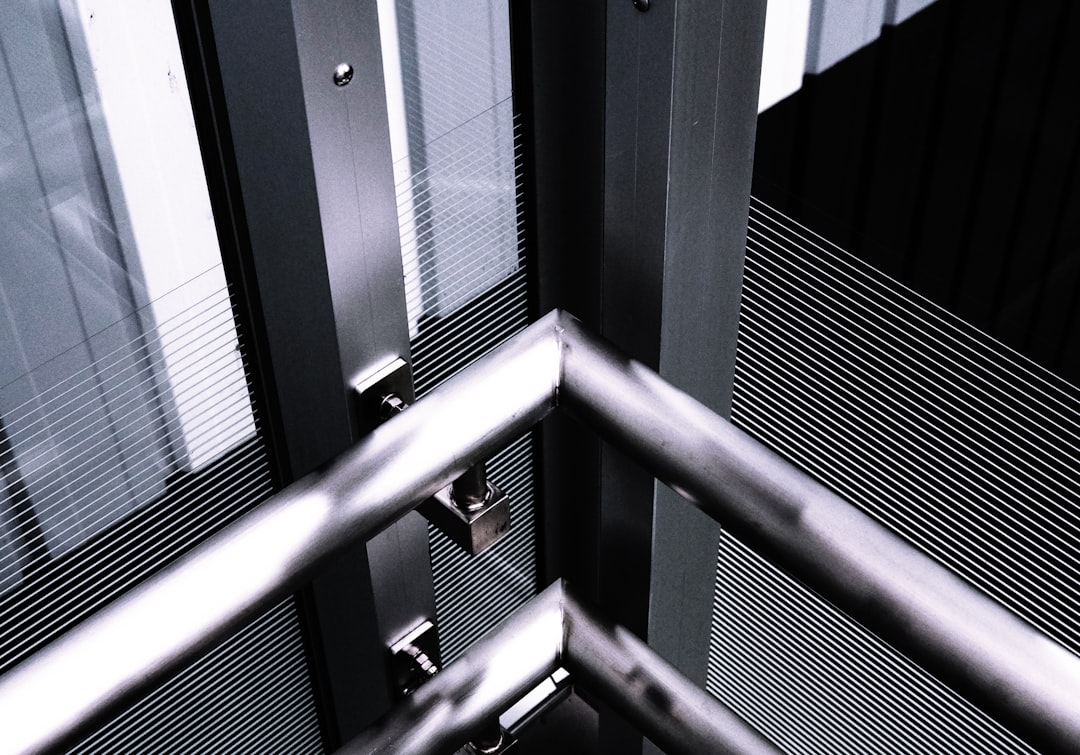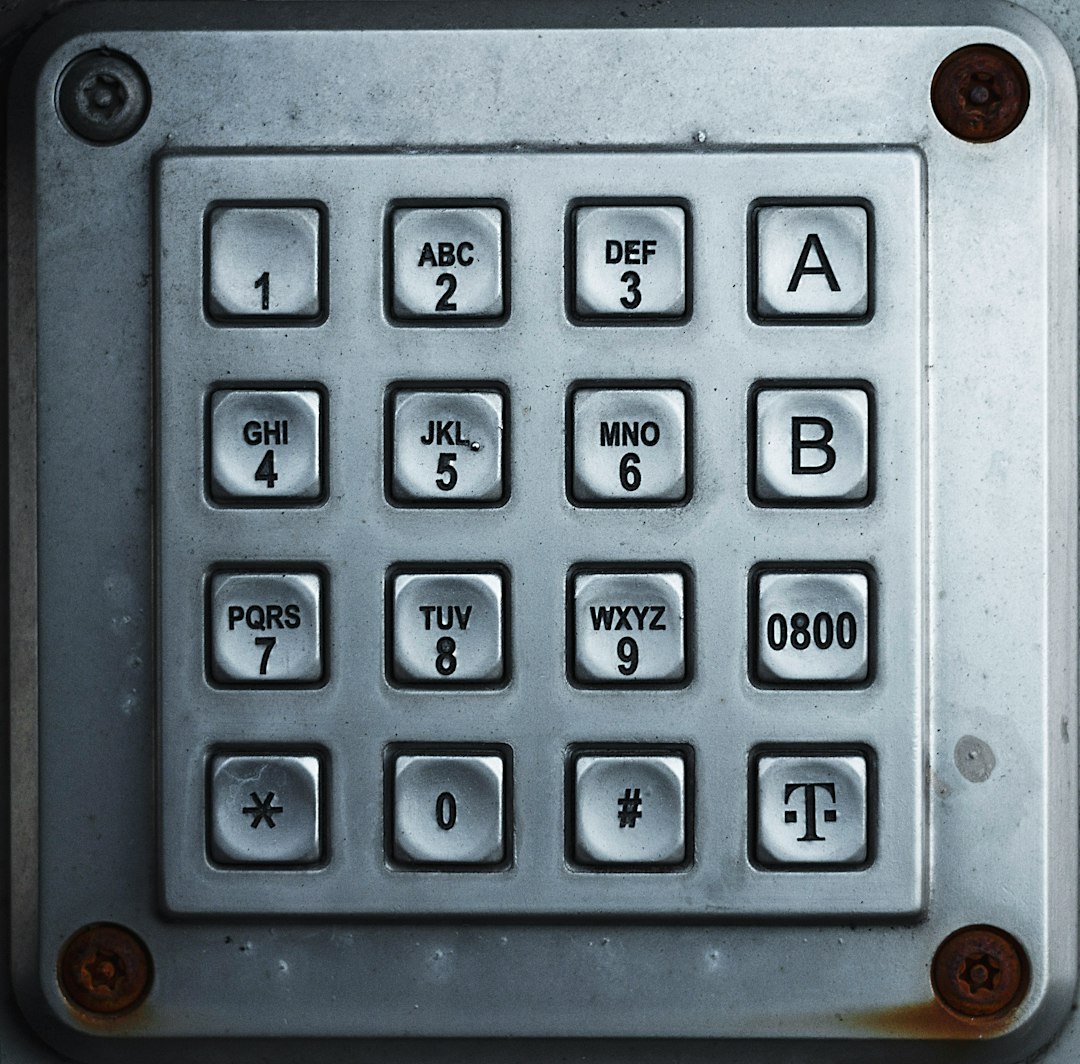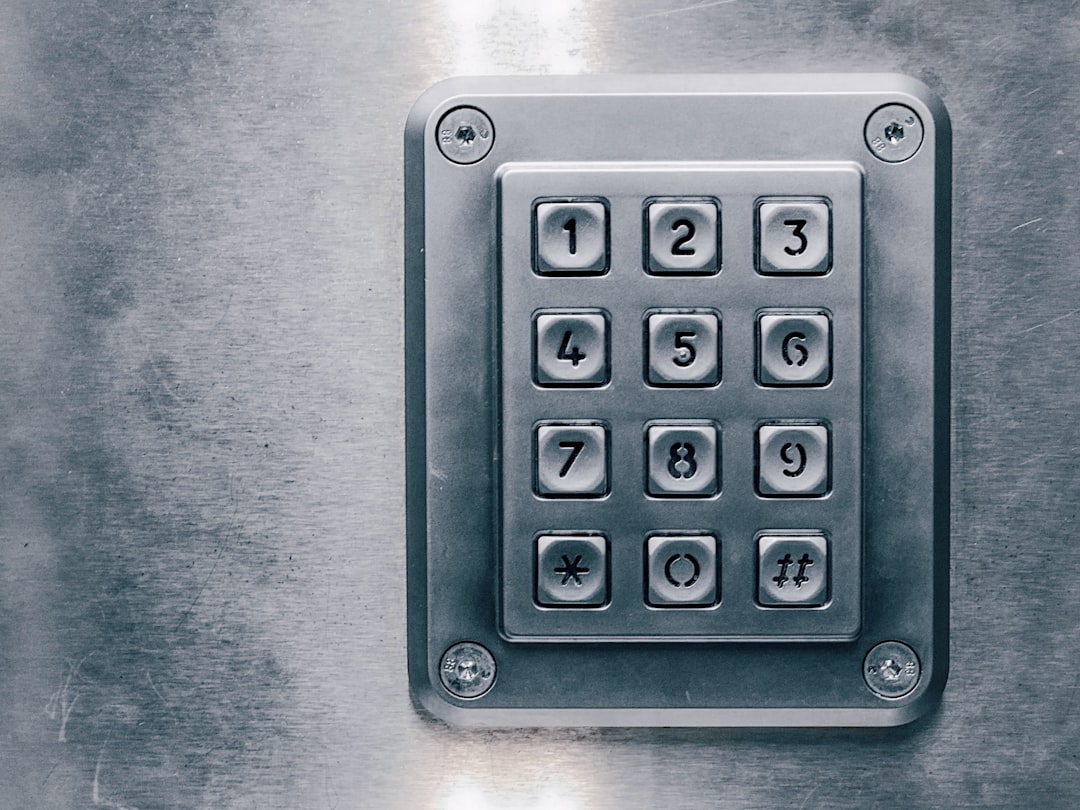

Engage prospects with a scan and streamline customer engagement with FREE QR code marketing tools by Sona – no strings attached!
Create a Free QR CodeFree consultation

No commitment

Engage prospects with a scan and streamline customer engagement with FREE QR code marketing tools by Sona – no strings attached!
Create a Free QR CodeFree consultation

No commitment
In today’s digitally driven home improvement market, security door screen installers face significant challenges in understanding and responding to real customer intent. Property owners and decision-makers often research options or gather information without submitting a form, leaving installers with an incomplete view of prospects and increasing the risk of missed opportunities. Meanwhile, analog processes like paper brochures and manual sign-in sheets make it difficult to reliably identify, engage, or follow up with stakeholders at key moments.
Modern advances in QR code technology now allow installers to bridge the gap between offline decision moments and digital engagement. By transforming each door screen installation or consultation into an actionable, measurable touchpoint, QR codes remove friction for homeowners and facilities managers, enabling instant estimate requests, access to installation guidelines, or even secure entry during the install. All of this is achieved seamlessly with a scan from a smartphone camera, with no app downloads or complicated setup, helping businesses respond faster to customer needs and adapt as circumstances change.
Leveraging QR technologies as part of a comprehensive strategy, security door screen installers can address challenges of unknown or anonymous traffic, missed follow-up opportunities, and a lack of real-time customer insight. This opens the door to smarter access control, smoother lead capture, and actionable reporting, while also complying with local regulations and driving measurable growth in a competitive market. Platforms such as Sona QR can centralize creation, management, and analytics, so teams scale confidently from pilot tests to full rollouts across marketing, operations, and service.

QR codes offer a practical way to address one of the most persistent industry pain points: connecting digital engagement with real-world activity. Security door screen installers frequently lose track of potential leads when traditional materials fail to capture meaningful data, leaving high-value prospects untracked in the CRM and resulting in lost revenue opportunities. By embedding QR codes into print collateral, job site signage, and installed hardware, every interaction can become a measurable event that feeds your pipeline.
The first priority is replacing manual and static workflows with QR-driven interactions that are fast for customers and easy for staff. When a homeowner can scan to request an estimate, retrieve a pre-visit checklist, or watch a short video that answers common questions, they are more likely to move forward. When a property manager can scan to log a maintenance ticket or register a warranty, your team gets structured data that triggers workflows automatically. The result is fewer missed moments, clearer attribution, and a strong foundation for retargeting and support.
Integrated QR platforms such as Sona QR make this transformation manageable. You can generate dynamic codes, assign them to campaigns or assets, control their destinations over time, and view analytics that reveal which placements drive real outcomes.
Instead of relying on print flyers alone, a single QR code on a yard sign takes visitors to a dynamic page with product comparisons, a cost estimator, and a booking calendar for nearby installers. Each scan is tracked in real time, segmented by source and location, and synced with the CRM so no high-intent visitor is missed and timely follow-ups become standard.
Moving potential clients from curiosity to decisive action remains a central challenge. Too often, valuable prospects remain anonymous, browsing product information or demo pages but leaving no trace and never entering follow-up workflows. Limited visibility into who interacts with traditional marketing materials or site visits means interested parties often remain unknown and unpursued. In an installation-driven business, that translates directly into slower pipelines, preventable no-shows, and missed upsell opportunities.
QR codes give security door screen installers a fast, reliable, and data-rich pathway to close the offline-to-online gap. A scan can instantly load a landing page with relevant content, capture a lead, or trigger a workflow that brings sales and service together. The low barrier to entry for customers, combined with dynamic content and measurable analytics for teams, makes QR codes a high-ROI tool in a low-margin environment.
QR codes directly address these challenges by:
From quotes and appointment cards to warranty stickers and job site instructions, QR codes create clear, measurable pathways for client engagement, compliance, and timely follow-up.

In home improvement and access security, incomplete or outdated customer data disrupts personalization and follow-up. Companies often miss critical segmentation or targeting opportunities, resulting in generic outreach with low response rates. The right QR code formats help capture intent at the moment it appears and route users to content that fits their needs.
Not all QR codes are created equal. Dynamic formats can be edited post-deployment, deliver analytics, and allow A/B testing. Static formats are suitable for permanent resources but are not trackable. For most installer use cases, dynamic QR codes provide flexibility and insight without extra complexity.
For security door screen installers, the most frequently used formats are web links for quotes and content, forms for service workflows, vCards for personal contact, and Wi-Fi for on-site teams. With Sona QR, you can generate all of the above in one place, set expirations on access-sensitive codes, and manage destinations centrally.
Identifying every key touchpoint in the customer journey is essential, yet many opportunities for engagement still go untapped. Installers often overlook crucial moments when a prospect is evaluating products, requesting information, or needing support. Each physical asset and interaction is a potential bridge to digital action if a scannable path is present.
Start by mapping your typical customer journey from awareness to post-install service. Determine which physical assets the customer sees at each stage and what immediate digital action aligns to that moment. Then assign unique, trackable QR codes so every scan paints a clearer picture of intent and value.
Modern QR code strategies should focus on:
Monitoring which placements generate engagement helps installers address churn risks, improve cross-sell timing, and adjust tactics to align with real customer demand.

Security door screen installers can apply QR codes across sales, operations, and service to strengthen revenue and retention. Begin with use cases that deliver immediate value, then expand to more advanced workflows as adoption grows. Each use case should connect a physical touchpoint to a clearly defined digital action and measurable outcome.
When selecting use cases, prioritize those that reduce friction for customers and eliminate manual work for your team. Aim for destinations that require little typing on a mobile device and that auto-fill or remember user context when possible. The following examples are tailor-made for installer workflows.
By deploying these use cases with dynamic QR codes, installers can measure which interactions lead to booked appointments, completed jobs, and repeat service revenue.
A common frustration for installers is failing to follow up with clients who show strong purchase intent but never submit a form. Each QR scan creates a trackable signal that captures context, intent, time, and location. When you deploy unique codes across materials and environments, you can auto-segment audiences and trigger tailored follow-ups without manual sorting.
Start by defining the funnel stages and aligning QR destinations to those stages. An awareness scan might open a gallery and capture an email for a style guide. A consideration scan might open a calculator and gather property details. A conversion scan might lock in a booking. With dynamic codes, you can update each destination to match seasons or promotions while preserving attribution.
With this approach, your retargeting relies on behavior signals rather than assumptions, improving response rates and lowering acquisition costs.
Many installers struggle with disconnected channels, making it hard to track results or deliver cohesive experiences across brochures, direct mail, events, or job sites. QR codes function as connectors that unify touchpoints and capture consistent data so you can see what works and scale it.
Treat every physical asset as a measurable node in your funnel. Use dynamic QR codes that point to landing pages optimized for mobile, and make the next step obvious. Then use a centralized platform such as Sona QR to manage codes, monitor performance by channel, and sync engagement data with your CRM and analytics tools.
QR codes are the offline on-ramp to your digital engine. With Sona QR, you manage all code creation and tracking centrally, while Sona.com helps tie multi-touch engagement to pipeline and revenue attribution.
Launching a QR campaign for security door screen installation is straightforward if you follow a disciplined plan. Define a single clear objective for your first rollout, choose an appropriate code type, and test in realistic conditions. Then expand placements as you validate performance and gather insights that inform your next iteration.
Below is a simple framework tailored to the installer workflow. Use it to launch your first campaign quickly, then refine with analytics and customer feedback. For speed and scalability, a platform like Sona QR can automate tracking, destination updates, and CRM syncing.
Following these steps ensures security door screen installers consistently capture and act on customer signals that would otherwise be missed. With each cycle, your campaigns become more precise and your pipeline more predictable.

Security door screen installers often struggle to connect physical interactions to sales outcomes. Yard signs, brochures, and equipment labels do their job, but without tracking, teams cannot tell which assets influence pipeline or retention. This leads to wasted spend, delayed follow-ups, and weak attribution models that hide profitable channels.
Modern QR tools change that. With dynamic codes and centralized reporting, every scan becomes a datapoint in your buyer journey. You can view which channels drive engagement, which pages convert, and how scan activity correlates with meetings, estimates, and closed jobs. When integrated with a CRM and attribution platform, QR events fill critical gaps between offline and online touchpoints.
Turn scan activity into structured, actionable data that guides targeting, budgeting, and long-term customer value. Over time, your QR analytics become a strategic asset that informs product messaging, geographic expansion, and service offerings.
Once your first campaign is live, small improvements compound quickly. Clearer CTAs increase scan rates. Personalized destinations lift conversion. Tighter integrations shorten response times. The key is to align each QR touchpoint with a specific action and make that action effortless on mobile.
Prioritize tactics that fit your most common media and audience contexts. For installers, that usually means direct mail, yard signs, showroom displays, job site signage, and post-install materials. Build discipline around tracking and automation so your team engages fast and consistently.
Creative deployment ideas include placing a subtle QR on the inside edge of a security screen to launch a quick care video, or adding a QR to HOA communications that routes to a pre-approved product and color guide for faster approvals. With automation connected through Sona QR, these scans can also score leads and notify the right team members.

QR codes shine when they remove friction, meet customers where they are, and reveal intent you can act on. In the security door screen category, the most impactful examples make complex decisions simple and give customers a reason to say yes sooner.
Consider these practical scenarios and the results they can drive. Each one connects a familiar physical moment to a mobile experience that educates, converts, or supports without slowing anyone down.
These examples demonstrate how QR codes turn invisible micro-moments into visible, trackable steps. Each scan documents intent, fueling timely follow-up and revealing which messages and placements accelerate conversions.
Deploying QR codes effectively is less about flashy design and more about clarity, context, and consistency. Customers scan when the benefit is obvious, the code is easy to reach, and the content answers their question immediately. Teams succeed when they plan the journey after the scan and keep destinations current.
Avoid the most common pitfalls by thinking through environments, user expectations, and mobile behavior. A beautifully printed code that takes people to a generic homepage will not perform. A code placed behind reflective glass or printed too small will frustrate scanners and suppress response.
Thoughtful planning for every QR touchpoint aligns the experience to real customer needs. When scans consistently produce value, your audience learns to trust and use them, which compounds ROI over time.
QR codes have become an essential strategy for security door screen installers. They bridge offline interactions and digital measurement, so every flyer, sign, and installed asset can initiate a meaningful action. When each scan connects to a clear outcome such as a booked appointment, a warranty registration, or a how-to video, your pipeline becomes more resilient and your customer experience more consistent.
By embedding QR codes across all customer and operational touchpoints, installers overcome the challenges of anonymous traffic and incomplete account data. Integrated analytics link scans to revenue so teams can invest in what works and cut what does not. With Sona QR handling code creation, routing, and analytics, and Sona.com connecting engagement to identity and attribution, you can build a performance-driven program without heavy engineering effort.
Here is what this unlocks for your business:
You can generate and track your first QR codes for free with Sona QR. Start creating QR codes for free. Start with one high-impact use case, measure the results, then expand to the channels where your customers already are. Every scan is an opportunity to serve better, sell smarter, and build a future-ready, data-driven installation business.
QR codes have revolutionized the security door screen installation industry by transforming traditional access control into seamless, tech-driven solutions. They enable installers and property managers to grant instant, secure access while enhancing customer convenience and trust. Imagine effortlessly managing who enters a property, tracking every access point, and providing customers with a frictionless experience—all through a simple scan.
With Sona QR, you can create dynamic, trackable QR codes tailored for security door screens that update instantly without the hassle of reprinting. This means real-time control, detailed access logs, and the ability to connect every scan to improved security outcomes and customer satisfaction. Start for free with Sona QR today and take the first step toward smarter, safer access management that drives trust and efficiency.
Security door screens enhance property safety while providing benefits like impact resistance, airflow, and compliance with building codes, and they offer opportunities for ongoing maintenance and upgrades through QR-enabled resources.
Choose an installer who uses modern digital tools like QR codes to provide instant estimates, clear product information, and seamless communication, ensuring better engagement, follow-up, and post-install support.
Security door screens vary by mesh type, impact resistance, airflow, and compliance features, with installers providing comparisons and product details often accessible through QR codes linked to dynamic digital catalogs.
Installation costs vary, but QR codes on yard signs or brochures can direct homeowners to instant quote calculators to get personalized cost estimates quickly and conveniently.
Maintenance involves regular care guided by user manuals and videos accessible through QR codes on installed screens, allowing customers to request service calls or warranty support easily.
QR codes enable instant access to estimates, installation guides, maintenance requests, and warranty registrations, reducing friction and enabling installers to capture and respond to customer intent in real time.
Dynamic QR codes linking to web pages, forms, vCards, Wi-Fi access, and SMS or email prompts are most useful because they provide flexibility, track engagement, and support various customer touchpoints.
Installers embed QR codes in brochures, yard signs, job site signage, and direct mail to capture leads, provide product education, enable appointment bookings, and collect reviews or referrals.
Best practices include defining clear campaign goals, choosing dynamic QR codes, designing scannable codes with clear calls to action, placing codes in high-visibility locations, and tracking scan data to optimize results.
Tracking scans provides data on customer engagement by location, time, and channel, enabling installers to prioritize leads, optimize marketing spend, automate follow-ups, and attribute revenue accurately.
Yes, temporary QR codes can grant authorized personnel secure site access and digital check-ins, improving compliance, coordination, and accurate work tracking.
QR codes on installed screens link customers to care videos, troubleshooting guides, warranty registrations, and service request forms, enhancing engagement and enabling timely support.
Avoid generic or outdated destinations, poor code placement that hinders scanning, unclear calls to action, and failing to educate staff on promoting QR code usage.
By assigning unique QR codes to different customer journey stages and actions, installers can segment audiences by intent, location, and timing, and sync data with CRM and ad platforms for personalized retargeting.
Use Sona QR's trackable codes to improve customer acquisition and engagement today.
Create Your FREE Trackable QR Code in SecondsJoin results-focused teams combining Sona Platform automation with advanced Google Ads strategies to scale lead generation

Connect your existing CRM

Free Account Enrichment

No setup fees
No commitment required

Free consultation

Get a custom Google Ads roadmap for your business






Launch campaigns that generate qualified leads in 30 days or less.
